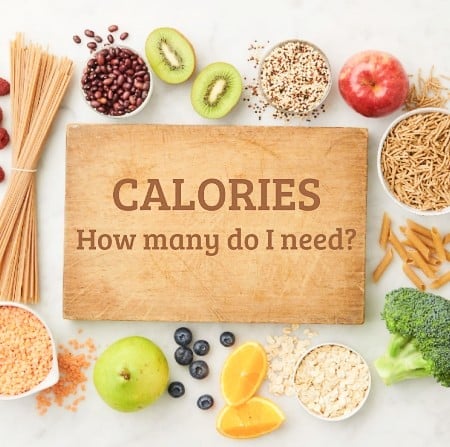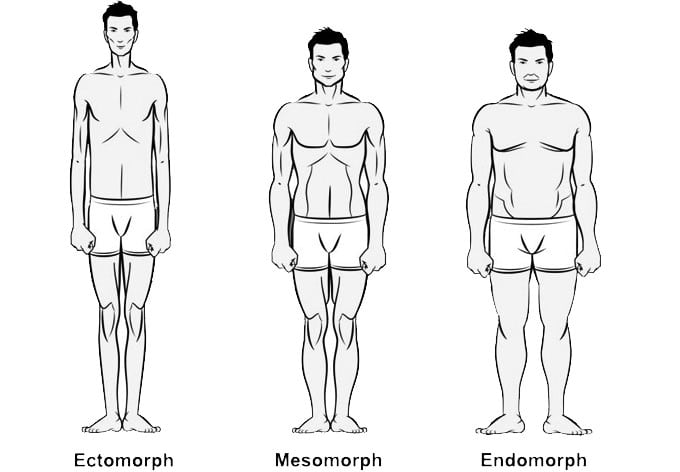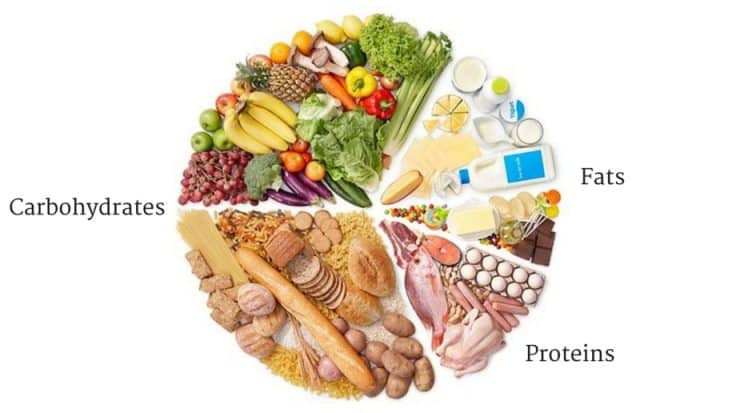
Weight Gain Calculator
Calorie Needed To Gain Weight:
_____ Calories/day
| Weight Gain Parameters | Value |
|---|---|
| Current Weight | |
| Goal Weight | |
| Goal Time (In days) | |
| To Maintain Weight (calorie/day) | |
| Calorie Surplus (calorie/day) |
Weight gain is a common goal for many people, whether it’s to gain muscle or improve health. However, it can be challenging to determine the optimal weight gain and calorie intake. That’s where weight gain calculators come in.
Weight gain calories calculator tells you how many calories you need to eat to gain the weight you want.
What Is Weight Gain?
Weight gain refers to an increase in body weight due to an increase in the amount of body fat or muscle mass. It is a natural phenomenon that occurs when the number of calories consumed exceeds the number of calories the body burns. This excess energy is stored in the body as fat or used to build muscle.
- To achieve a slow weight gain, you should aim for a surplus of 300–500 calories above your maintenance level.
- You should try eating an extra 700-1,000 calories daily to gain weight.
Gaining weight can benefit some people, like those who want to gain muscle and get stronger or recover from illness. But for others, eating unhealthy food or spending too much time sitting still can be bad.
It’s important to understand the factors that lead to weight gain and make smart decisions about maintaining a healthy weight.
It is important to note that calorie calculators offer approximations.
You don’t have to monitor how many calories you eat for the rest of your life, but doing so for the first few days or weeks could help you figure out how many calories you’re eating.

Related Calculator: Weight Loss Calculator
How To Calculate Calories Requirement To Gain Weight
1. Determine Your BMR
Use an online BMR calculator or the Mifflin-St Jeor Equation to estimate your BMR based on your age, gender, weight, and height.
- For men: BMR = (10 x weight in kg) + (6.25 x height in cm) – (5 x age in years) + 5
- For women: BMR = (10 x weight in kg) + (6.25 x height in cm) – (5 x age in years) – 161
2. Estimate Your Activity Level
You should estimate the number of calories you burn through physical activity based on your daily routine and exercise habits.
There are several ways to do this, but a common method is to use an activity multiplier:
Activity Level
- Sedentary (little or no exercise): BMR x 1.2
- Lightly active (1-3 days of exercise per week): BMR x 1.375
- Moderately active (3-5 days of exercise per week): BMR x 1.55
- Very active (6-7 days of exercise per week): BMR x 1.725
- Extra active (very intense exercise or physical job): BMR x 1.9
3. Calculate Your TDEE:
- TDEE = BMR + Activity Level
4. Calculator Calories For Weight Gain
Once you have calculated your TDEE, you can adjust your calorie intake to achieve your desired weight gain.
- You must create a calorie surplus by consuming more calories than your TDEE to gain weight.
- A daily surplus of 500–1000 calories is recommended for safe and sustainable weight gain.
- Keep track of your calorie intake and make gradual changes.
- 1 kg of body fat contains approximately 7700 calories.
- 1 pound of body fat contains approximately 3500 calories.
Gain Weight Weekly Calories Requirement
- To Gain Weight 0.25 Kg/Week
- = (0.25 kg x 7700 calories/kg ÷ 7 days/week).
- You need a 275-calorie surplus per day.
- If your TDEE is 2000 calories daily, you should consume 2275 calories daily (2000 + 275) to gain 0.25 kg/week.
- To Gain Weight 0.5 Kg/Week
- = (0.5 × 7700 ÷ 7).
- You need a 550-calorie surplus per day.
- If your TDEE is 2000 calories daily, you should consume 1450 calories daily (2000 + 550) to gain 0.5 kg/week.
- To Gain Weight, 1 Kg/Week
- = (1 × 7700 ÷ 7).
- You require an 1100-calorie surplus per day.
- If your TDEE is 2000 calories daily, you should consume 3100 calories daily (2000 + 1100) to gain 1 kg/week.
5. Calculate Zig Zag Calories
To calculate Zigzag calories, you must determine your weekly calorie target and alternate between high and low-calorie days to meet that target.
- Determine your weekly calorie target based on your weight gain.
- Daily Calorie Target = Weekly Calorie Target / 7
- Alternate between low and high-calorie days to create a calorie surplus for weight gain.
- On low-calorie days, consume 300–500 calories less than your daily target,
- On high-calorie days, consume 100–300 calories more than your daily target.
6. Track Your Calories
Several user-friendly applications are available on smartphones that enable you to monitor your calorie intake, exercise, and progress.
Counting calories may not suit everyone, as it can be challenging to gauge food proportions and the number of calories they contain.
However, by tracking and measuring the calorie content of some of your regular meals, you can quickly learn to estimate calorie intake without weighing or measuring your food each time.
Alternatively, you may prefer to track your progress manually using an Excel spreadsheet or a pen-and-paper journal, both of which are viable options.
7. Track Your Progress
Take time to track your progress and adjust your plan accordingly. You should not only consider weight gain when deciding your health and fitness; you should also consider muscle gain.
Furthermore, measurements should be taken over longer periods of time, such as a week (rather than daily), as significant variations in weight can occur based on water intake or time of day.
For consistent measurements, weigh yourself every day at the same time, like right after you wake up and before breakfast.
Keynote:
It’s important to note that achieving a healthy weight gain requires a proper diet and regular exercise. While increasing your calorie intake drastically to gain weight quickly may be tempting, it is not recommended.
Gaining weight too quickly can have negative effects on your body. Aiming to gain 1 pound (0.45 kg) a week would add roughly 500 calories to your daily weight maintenance calorie needs.
Maintaining a healthy diet while increasing calorie intake is important for supporting the body’s metabolic processes and replenishing itself.
Therefore, monitoring calorie and nutrient intake, including fiber, is important to ensure the body receives all necessary nutrients to maintain balance and overall health.
If you’re gaining weight at a rate of 1 pound (0.45 kg) or more per week, consult with a doctor.

Mifflin-St. Jeor Equation To Calculate Weight Gain Calories
Let’s say a 40-year-old female weighs 70 kilograms (154 pounds) and is 170 centimeters (5 feet 7 inches) tall.
To calculate her estimated BMR using the Mifflin-St. Jeor equation, we need to use the following formula:
- BMR = (10 x weight in kg) + (6.25 x height in cm) – (5 x age in years) – 161
Substituting the values into the equation to get BMR:
- = (10 x 70) + (6.25 x 170) – (5 x 40) – 161
- = 700 + 1062.5 – 200 – 161
- = 1,401.5 calories per day
TDEE for Lightly active (1-3 days of exercise per week): BMR x 1.375
- TDEE =1401.5 x 1.375
- TDEE = 1927.06
This is the total calories you could eat every day if you wanted to maintain your weight.
To Gain Weight 0.25 Kg/Week
- = (0.25 kg x 7700 calories/kg ÷ 7 days/week).
- She needs a 275-calorie surplus per day.
- Calories for weight gain = TDEE +275.
- = 2202
Zigzag Calorie Cycling To Gain Weight
Zigzag calorie cycling isn’t just for weight loss. In fact, it can also be an effective strategy for those looking to gain weight. By alternating between high and low-calorie days, you can meet your weekly calorie target and avoid the adaptation that comes with a consistent high-calorie intake.
To implement zigzag calorie cycling for weight gain, a person would alternate between high and low-calorie days, aiming to meet the same weekly calorie target.
For example, someone with a weekly calorie target of 18,500
Zig Zag Plan-1
- Consume 3,500 calories for three days a week and
- 2,000 calories for the other four days.
Zig Zag Plan-2
- Consume 2,500 calories each day for five days a week and
- 3,000 calories for the other two days.
This approach not only provides flexibility in the diet but also allows for planned overeating on special occasions without derailing progress. By consuming fewer calories on low-calorie days, a person can balance out the excess calories consumed on high-calorie days.
When implementing zigzag calorie cycling for weight gain, it’s essential to ensure that the high-calorie days provide enough calories to support muscle growth and recovery.
The high-calorie days should be tailored to meet the body’s demands, especially for those with a higher activity level.
While there is no concrete rule on how to vary calorie intake with zigzag calorie cycling, a general recommendation is to very high and low-calorie days by approximately 200–300 calories.
The calculator provides two zigzag diet schedules, one with two high-calorie days and five low-calorie days, and one that gradually increases and reduces calories. However, the approach should be personalized based on individual preferences and lifestyle.
How To Calculate Zigzag Calorie Cycling For Weight Gain
- Daily Calorie Target (Weight Gain) = Weekly Calorie Target / 7
- Plan low-calorie days when you consume 100–300 calories less than your daily calorie target.
- Low Calorie Day Target = Daily Calorie Target – (100-300) calories.
- Plan high-calorie days when you consume 100–300 calories more than your daily calorie target.
- High Calorie Day Target = Daily Calorie Target + (100-300) Calories
- Create a schedule for your low and high-calorie days, and stick to it consistently.
- Example: Monday – Low Calorie Day
- Tuesday – High Calorie Day
- Wednesday – Low-Calorie Day, and so on.
- Monitor your progress by regularly weighing yourself and taking body measurements. Adjust your calorie intake as needed based on your progress.
- If your progress is slower than expected, you can reduce your calorie intake on high-calorie days or increase your calories on low-calorie days.
- If your progress is faster than expected, you may need to decrease your calorie intake on high-calorie days or decrease your calories on low-calorie days.
- Remember to maintain a balanced and nutritious diet, regardless of the calorie intake on a given day. It’s important to consume a variety of nutrient-dense foods to support your overall health and well-being.
Other Formulas For Calculating Weight Gain Calories
There are several formulas that can be used to calculate calories to gain weight.
- Harris-Benedict equation
- Katch-McArdle equation
- Cunningham equation
- Owen equation
How Many Calories Do You Need?
A good daily caloric intake is important for gaining weight. However, there is no one-size-fits-all answer to the question of how many calories a person needs to gain weight healthily. Many factors, such as age, weight, height, sex, level of physical activity, and overall health, play a role.
For example, a young athlete who engages in vigorous exercise for many hours daily will require more calories than a sedentary office worker of the same age and gender. The athlete’s body will need more energy to sustain the physical demands of their sport and maintain optimal health, while the office worker’s body will require fewer calories to maintain basic bodily functions.
The total number of calories a person requires each day varies depending on many factors, including the person’s age, sex, height, weight, and level of physical activity. In addition, a need to lose weight, maintain, or gain weight and other factors affect how many calories should be consumed.
According to the 2015-2020 Dietary Guidelines for Americans, daily calorie requirements for weight gain may range from 2,000 to 3,000 calories for men and 1,600 to 2,400 calories for women.
Generally, a healthy weight gain is between 0.5 and 1 pound per week, meaning you must eat 250 to 500 calories daily.

How Many Calories Do I Need To Gain Weight?
You must consume more calories than your total energy expenditure (TDEE) to gain weight.
Several factors, including your basal metabolism, metabolic response to food, physical activity, and physiological state, determine your TDEE.
- You can calculate your basal metabolism using the Mifflin-St. Jeor equation in a BMR calculator
- Then, you can learn about your maintenance calories by adding activity levels with BMR.
- Once you have determined your daily caloric needs, you must consume excess calories to gain weight.
- Typically, you require approximately 3850 kcal to gain 0.5 kg or 1.1 lbs weekly.
- This means consuming an additional 550 kcal daily should result in a weight gain of 0.5 kg (1.1 lbs) within a week.
If you haven’t already, check out our weight gain calorie calculator. It estimates your daily energy expenditure, giving you a more profound understanding of how many calories you must consume daily to gain weight.
Give it a try to jumpstart your weight gain journey.
Macronutrient Ratios For Weight Gain
If your goal is to gain lean muscle mass, you should consume a higher proportion of your calories from protein. Mike Roussell recommends the following baseline macronutrient ratios.
Note that these ratios are based on the overall percentage of calories consumed.
| Body Type | Fat % | Carbohydrate % | Protein % |
|---|---|---|---|
| Ectomorph (skinny) | 20-30% | 50-60% | 20-30% |
| Mesomorph (muscular & athletic) | 15-25% | 40-50% | 30-40% |
| Endomorph (broad & thick) | 25-35% | 30-40% | 30-40% |
It is important to note that the ratios presented are general guidelines and may require adjustment based on your specific needs and objectives.

How To Gain Weight And Build Muscle
You must create a calorie surplus to gain weight, which means consuming more calories than your TDEE. Here are some ways to use TDEE to gain weight:
1. Calculate Your Weight Gain Calories
Start by using an online calculator or a formula to determine how many calories you need to gain weight. This will give you an idea of how many calories your body needs to gain weight.
2. Increase Your Caloric Intake
The most important thing you can do to gain weight is to create a calorie surplus, which means you eat more calories than your body needs.
Aim to add around 500 calories to your daily diet, which should help you gain around 1 pound (0.45 kg) per week.
It is important to note that eating a calorie surplus does not mean eating junk food all day long. You still need to eat healthy foods that will give your body the necessary nutrients.
Calories In Common Food Components
| Food Component | Energy per Gram |
|---|---|
| Carbohydrates | 4 calories/gram |
| Protein | 4 calories/gram |
| Fat | 9 calories/gram |

3. Choose Healthy, High-Calorie Foods
Eating nutritious foods that are high in calories is a good way to gain weight. It is important to eat plenty of high-carb and high-fat foods. Eating plenty of protein at each meal is also important, as protein helps build muscle.
Focus on eating nutrient-dense, high-calorie foods such as nuts, avocados, whole grains, lean protein, and healthy fats. Avoid filling up empty calories such as sugary drinks and junk food.
4. Increase Your Protein Intake
Protein is essential for optimal growth, development, and human health. Adequate consumption of high-quality proteins from animal products is especially important for people who are trying to gain weight.
A 2020 study found that increasing protein intake can increase lean muscle mass. The recommended dietary allowance of protein for healthy adults is between 1 to 1.6 grams per kilogram of body weight per day. However, up to 2 grams per kilogram of body weight per day may be safe for healthy adults.
High-protein foods include meat, fish, eggs, some dairy products, legumes, nuts, and others. Protein supplements like whey protein can also be useful if it is difficult to get enough protein in your diet.
5. Eat frequently
Eating frequently is one of the best ways to gain weight. It helps you spread out your calories throughout the day, making it easier to reach your daily goal.
When you eat less frequently, your body goes into starvation mode, and it becomes harder to lose weight. Aim for 3–4 meals daily, with 1–2 snacks in between.
Tips for eating frequently:
- Plan Ahead: Prepare snacks and meals in advance to always have nutritious food.
- Small and Balanced: Opt for smaller, balanced meals and snacks. Include a mix of protein, healthy fats, and carbohydrates for sustained energy.
- Snack Options: Keep healthy snack options on hand, such as nuts, fruits, yogurt, whole-grain crackers, or veggies with hummus.
- Timed Meals: Aim to eat every 3-4 hours to maintain a consistent eating schedule.
- Avoid Processed Snacks: Opt for whole, nutrient-dense foods instead of processed and sugary snacks.
- Include Protein: To support muscle growth, include protein-rich snacks like Greek yogurt, cottage cheese, or a protein shake.
6. Start Weight Lifting
Resistance training leads to muscle hypertrophy, which increases muscle mass. Aim to lift weights or perform bodyweight exercises at least 4-5 times per week.
Prioritize compound exercises that work multiple muscle groups at once. Squats, deadlifts, bench press, overhead press, rows, and pull-ups are excellent choices.
The push-ups, pull-ups, and other compound exercises really help me build muscle mass during my muscle-building journey.
7. Get Enough Sleep
A study has found that sleep deprivation can lead to a decrease in testosterone levels and can impair muscle gain.
Sleeping is a crucial factor in promoting weight gain, as during sleep, the body goes through a process of repairing and rebuilding muscle tissue. This is very important after doing heavy lifting or other hard exercises.
When you get enough sleep, you can lift weights and do harder workouts later.
This study showed the relationship between sleep deprivation and insulin resistance. The researchers found that sleep deprivation is associated with decreased insulin sensitivity, which means that the body is less able to use glucose for energy.
Tips To maximize the benefits of sleep for weight gain:
- Aim for 7-9 hours of quality sleep each night.
- Establish a consistent sleep schedule, going to bed and waking up at the same time daily.
- Create a relaxing bedtime routine to signal your body that it’s time to wind down.
- Ensure your sleep environment is comfortable, cool, dark, and quiet.
- Limit caffeine and avoid heavy meals close to bedtime.
FAQs
How can I gain weight in a healthy way?
To gain weight healthily, it is recommended to increase calorie intake gradually and focus on consuming nutrient-dense foods such as lean protein, whole grains, fruits, and vegetables.
Resistance training can also help build muscle mass.
How much weight can I realistically expect to gain per week?
A healthy weight gain is between 0.5 and 1 pound per week. This can vary based on individual factors such as age, gender, height, weight, and level of physical activity.
How do you calculate weight gain?
To calculate weight gain, you need to determine the total caloric surplus required to achieve your weight goal. To promote weight gain, you need to calculate your total daily caloric needs and then add an appropriate surplus of calories.
How much does it take to gain 1 kg?
It takes about 7,700 calories to gain 1 kg of body weight. This means that if you eat 7,700 calories more than you burn each week, you will gain about 1 kg of weight.
If you are trying to gain weight, eating a healthy diet rich in calories is important. You should also make sure to exercise regularly, as this will help you build muscle.
Can I gain 5 kg in a month?
It is possible to gain 5 kg in a month, but it is not recommended. The rapid gain of weight can result in health issues such as obesity, heart disease, and diabetes.
A safe and healthy rate of weight gain is 1-2 pounds (0.45-0.91 kg) per week. This means that you would gain about 5 kg in 12 weeks or 3 months.
How many kg should I gain?
A good starting point is to aim to gain 1-2 pounds (0.45-0.91 kg) per week. It is also important to be patient and realistic when gaining weight. It takes time to see results, so don’t get discouraged if you don’t see changes immediately.
How can a skinny person gain weight?
- Increasing Caloric Intake: Consume more calories than your body burns to create a caloric surplus, which promotes weight gain.
- Nutrient-Dense Foods: Focus on nutritious, calorie-dense foods such as nuts, avocados, whole grains, and healthy fats.
- Protein-Rich Diet: Add protein sources like eggs, lean meats, fish, and legumes to support muscle growth.
- Strength Training: It stimulates muscle growth and adds lean mass to your body.
- Frequent Meals: Eat several small, balanced meals throughout the day to maintain a steady calorie intake.
- Avoid Excessive Cardio: Limit excessive cardio workouts, as they burn calories and may hinder weight gain efforts.
- Stay Hydrated: Drink enough water to support overall health and proper digestion.
- Get Adequate Rest: Your body can recover and grow by sleeping sufficiently each night.
What is the maximum weight gain per month?
The maximum safe monthly weight gain is 2 pounds (0.91 kg) for women and 3 pounds (1.36 kg) for men. Any more than this, you risk gaining too much fat, which can lead to health problems.
Rapid weight gain beyond this range can be unhealthy and may lead to issues like metabolic disturbances or nutrient imbalances. Focusing on gradual and sustainable weight gain is essential for long-term health and well-being.
Takeaways
To gain weight, you need to consume more calories than you burn. The Weight Gain Calculator is a useful tool that can help you determine your TDEE and estimate the number of calories you need to consume to reach your weight gain goals.
Consuming a balanced diet with a proper ratio of macronutrients, including protein, carbohydrates, and fats, is important to support muscle growth and overall health.
You should aim to gain weight gradually and in a healthy way rather than trying to gain weight too quickly, which can have negative health effects.
Sources
- How much protein you need everyday? Harvard Health Publishing, Harvard Medical School. https://www.health.harvard.edu/blog/how-much-protein-do-you-need-every-day-201506188096
- U.S. Department of Health and Human Services and U.S. Department of Agriculture. 2015 – 2020 Dietary Guidelines for Americans. 8th Edition. December 2015.
- Mifflin MD, St Jeor ST, Hill LA, Scott BJ, Daugherty SA, Koh YO. “A new predictive equation for resting energy expenditure in healthy individuals“ The American Journal of Clinical Nutrition (February 1990).
- Prevalence of Underweight Among Adults Aged 20 and Over: United States, 1960–1962 Through 2017–2018.
- Nathaniel F Watson, Kathryn Paige Harden, Dedra Buchwald, Michael V Vitiello, Allan I Pack, David S Weigle, Jack Goldberg Sleep duration and body mass index in twins: a gene-environment interaction.

Manish brings over 10 years of hands-on experience in weight lifting and fat loss to fitness coaching. He specializes in gym-based training and has a lot of knowledge about exercise, lifting technique, biomechanics, and more.
Through “Fit Life Regime,” he generously shares the insights he’s gained over a decade in the field. His goal is to equip others with the knowledge to start their own fitness journey.
